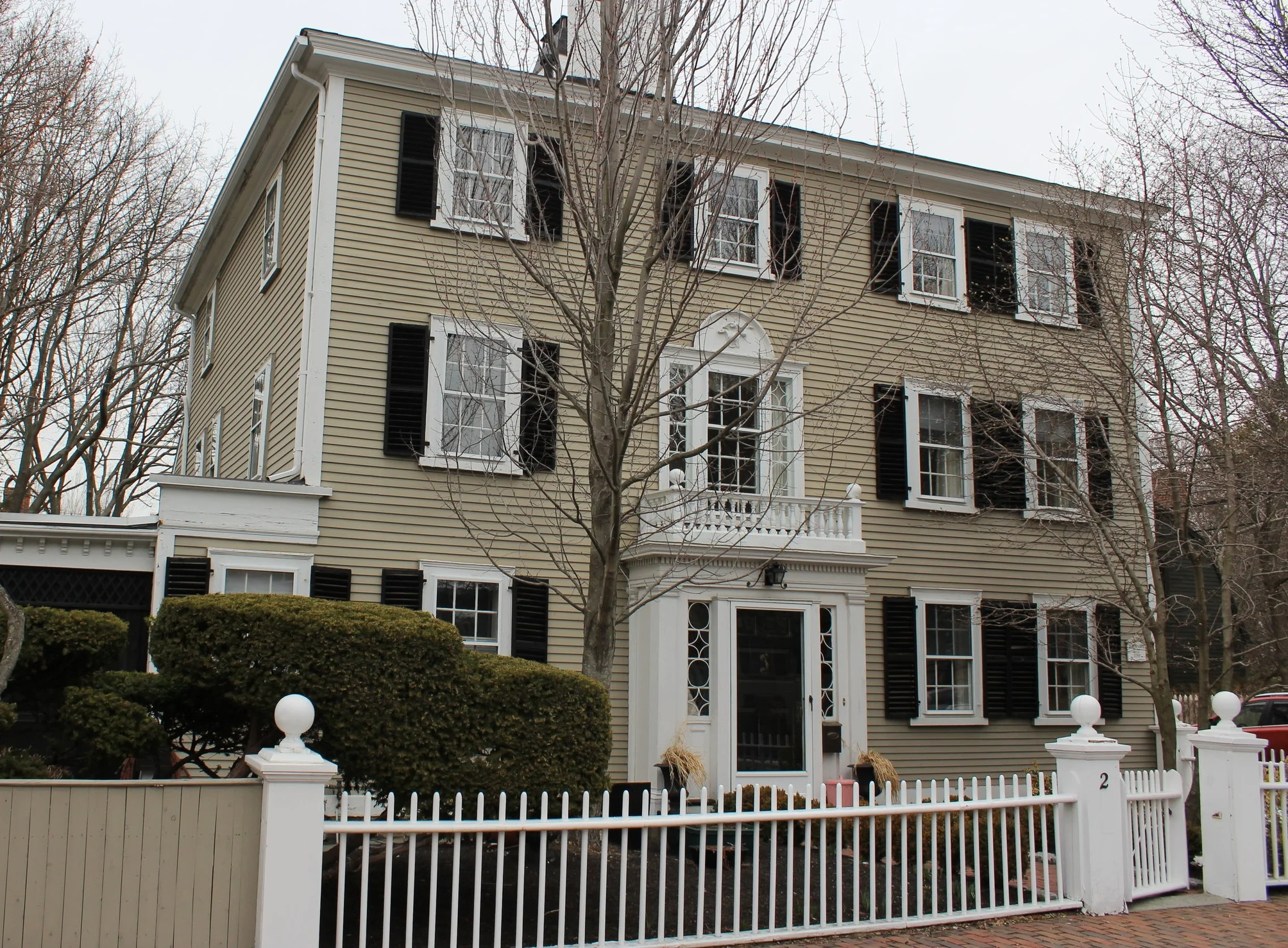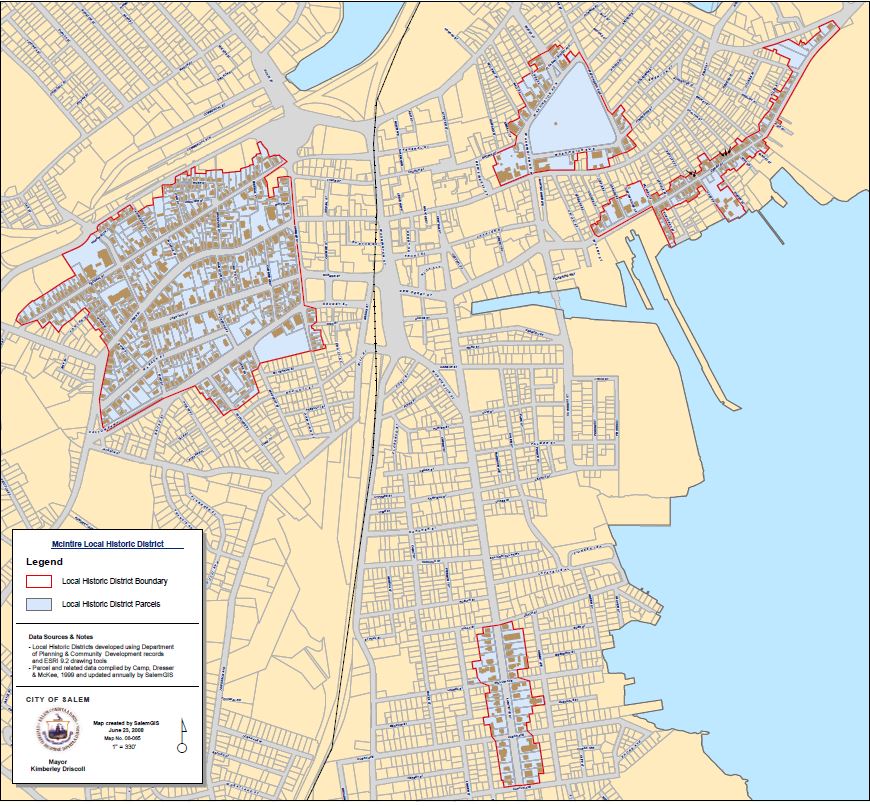LOCAL HISTORIC DISTRICT ADMINISTRATION
A local historic district is an area with specific boundaries that has been recognized for its historically and architecturally significant quality and so designated by a vote of the City Council. Salem's local historic districts are administered by the Salem Historical Commission, a volunteer board of Salem residents appointed by the Mayor and approved by the City Council. A complete map of the City's historic districts can be found here.
Any exterior work proposed in a local historic district must be approved by the Historical Commission prior to work commencing. When planning alterations to a property, property owners should be prepared to apply for approval well in advance of the date you wish to begin any exterior work. No work can commence until approval is obtained. A person commencing or completing work without the necessary approval of the Commission is subject to legal enforcement and potential fines. The Commission is not responsible for an owner’s neglect to inquire about necessary City permits and approvals.
There are three types of Certificates that constitute approval:
Certificate of Appropriateness - required for changes visible from a public way. A representative from the Commission will determine that which is visible or not visible. Examples of changes include but are not limited to the following:
- Additions, new construction, and alterations. Alterations may include changes in design, material, color or outward appearance of the structure including, but not limited to, doors, walls, fences, entrances, gutters, railings, roofs, chimneys, porches/decks, skylights, windows and exterior staircases.
- Removal of any features (i.e. shutters, porches, siding, windows, fences, railings, doors, chimneys, etc).
- Demolition including structural, walls, fences, exterior staircases, garages, sheds, etc.
- Paint colors (including windows, doors, porches & storms, etc.), satellite dishes, solar panels.
- Roof color and materials.
- Free standing light posts/fixtures. Signs and sign posts. Note: Signs must also conform to the City of Salem Sign Ordinance.
Certificate of Hardship - used for the same type of changes as a Certificate of Appropriateness. It can only be issued when a Certificate of Appropriateness would be denied as inappropriate and such denial will involve a substantial hardship, financial or otherwise, to the applicant. Approval of a Certificate of Hardship must not affect the historic district in general, must be without substantial detriment to the public welfare and must not cause departure from the intent and purposes of the Historic Districts Act. The Commission will not approve a Certificate of Hardship in instances where the hardship was self-created (i.e. financial burden to undo work performed that had not been approved by the Commission).
Certificate of Non-Applicability - way of ratifying that a Certificate of Appropriateness is not required for the work being performed. This certificate, along with the pictures to be taken, protects the property owner from questions about changes have been made without authorization. A Certificate of Non-Applicability is required for the following:
- Additions, alterations or new construction not visible from a public way, public street or public park. A representative from the Commission will determine that which is visible or not visible.
- Temporary structures or signs, subject, however, only to such conditions as to duration or use, location, lighting, removal and similar matters as the Commission may reasonably specify.
- The reconstruction, substantially similar in exterior design, of a building, structure, or exterior architectural features damaged or destroyed by fire, storm or other disaster, provided such reconstruction is begun within one year thereafter and carried forward with due diligence.
- Ordinary maintenance, repair or replacement of any exterior architectural feature which is damaged or worn provided the work does not involve a change in design, material, color, or outward appearance of the structure.
The Commission has no jurisdiction over the following:
- Terraces, walks, driveway materials, sidewalks and similar structures provided that any structure is substantially at grade level.
- Storms doors, storm windows, screens, window air conditioners, lighting fixtures attached to the building, antennae and similar appurtenances. (Note that the Commission does have jurisdiction over the paint colors of storm doors and windows. Note that the Commission does have jurisdiction over satellite dishes and solar collectors.)
- Interior work that does not affect the exterior in material, design or outward appearance.
- Landscaping. (Note that the Commission does have jurisdiction over retaining walls - e.g. railroad ties.)

